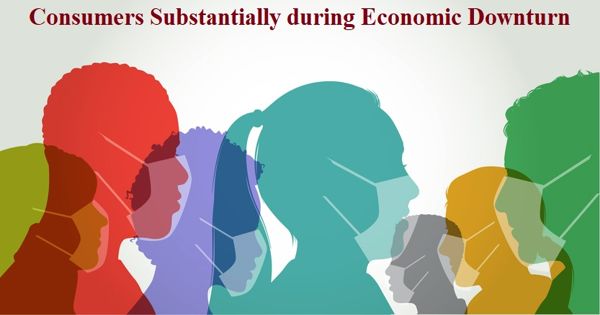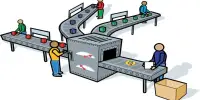Consumers Substantially during the Economic Downturn
Private consumption is the major portion of the gross domestic product (GDP). It has a huge effect on the pace of recovery from the global downturn. A recent analysis reveals that the central bank tool known as quantitative easing has benefited customers dramatically since the last global economic downturn-a result that directly applies to today’s pandemic-hit economy.
More precisely, the analysis found that there is one particular method of quantitative easing in the United States. The Federal Reserve bought large volumes of mortgage-backed securities – lowered mortgage interest rates, encouraged households to refinance their home loans, spend more on daily goods, and boosted the economy.
“Quantitative easing has a huge effect, but it does matter who it targets,” says Christopher Palmer, an MIT economist and co-author of a recently published paper detailing the results of the study.
All told, according to the report, the Fed’s so-called QE1 process from late November 2008 to March 2010, part of the broader quantitative easing scheme created around $600 billion in mortgage refinancing at lower interest rates, adding around $76 billion in increased investment back to the wider economy.
However as the report also indicates, the people gaining from QE1 were a relatively small group of mortgage holders: creditors from the Government Funded Agencies (GSEs) Fannie Mae and Freddie Mac. So while analysts may speak about quantitative easing as a “helicopter drop” of money spread around the public, prior Fed initiatives were comparatively tailored. Recognizing this could affect strategic decisions in the future.
“It’s not like the Fed drops money from a helicopter and then it lands randomly and uniformly and equally across the population, and people pick up those dollars and spend money and are off to the races,” Palmer says. The article, ‘How Quantitative Easing Works: Facts on the Refinancing Process,’ is published in the most recent issue of the Study of Economic Studies. The contributors include Marco Di Maggio, associate professor at Harvard Business School; Amir Kermani, associate professor at the Haas School of Business at the University of California at Berkeley; and Palmer, Albert and Jeanne Simple Career Growth Assistant Professor at the MIT Sloan School of Management.
Mortgage relief for some
The advent of quantitative easing after the Great Recession contributed to a major expansion of the instruments used by central banks. Instead of restricting its reserves to treasury shares, the U.S. The Federal Reserve’s acquisition of mortgage-backed securities—loans backed by home loans—has offered it more space to stimulate the economy by lowering interest rates in another sector of the bond market.
The first round of quantitative easing, QE1, which launched in November 2008, contained $1.25 trillion in mortgage purchases. The second round, QE2, which began in September 2010, concentrated solely on treasury securities. The third round, QE3, was released in September 2012 and was a mix of mortgage and treasury security acquisitions.
In order to carry out the analysis, the researchers relied heavily on a database from Equifax, the giant consumer credit monitoring agency, which provided comprehensive statistics on mortgages at the personal level. This covers the scale of individual loans, their interest rates, and other liabilities. The database represented about 65 percent of the mortgage industry. “It basically allowed us to trace the flow of Fed mortgage purchases down to individual households – we could see who was refinancing when the Fed was intervening to make interest rates lower,” Palmer says.
The study showed that refinancing activity rose by about 170 percent during QE1, with interest rates declining from about 6.5 percent to 5 percent. However, the Fed’s buying operation was highly focused on “conforming” mortgages—those that fit the GSE requirements, which often permit loans to finance no more than 80 percent of the value of a house.
With the Fed not directing its money at non-compliant mortgages, even less refinancing came from individuals with these kinds of home loans. “We saw a really big difference in who seemed like they were getting credit during quantitative easing,” Palmer says.
That means QE1 bypassed a lot of people who wanted it the most. Consumers with non-compliant mortgages, on the whole, were in poorer financial straits than those who could originally bring more money into their properties. Checking the data geographically, the researchers also found that much less refinancing had occurred in the “sand states” where a significant number of subprime, non-compliant mortgages had been issued—especially Florida, Arizona, Nevada, and the Inland Empire area of California.
“People who are outside the conforming mortgage system are often those who need help the most, whether that’s because their loan size is too big, or their equity is too small, or their credit score is too low,” Palmer says. “They often needed the stimulus most and yet couldn’t get it because credit was too tight.”
Take it easy
In view of both the effectiveness and the focused existence of QE1, Palmer indicates that potential approaches may be extended. “One of our takeaways is that if the Fannie and Freddie requirements can be temporarily loosened, then Federal reserve QE purchases can do a lot more good, because they can reach more borrowers,” Palmer notes.
More generally, looking at the economic world as the Covid-19 pandemic progresses, Palmer says we should begin to explore how and to whom the central banks will offer relief. Via very low-interest rates, the U.S. The Federal Reserve cannot provide far-reaching relief by changing the prices. More support may come from efforts such as the Main Street Loan Scheme facilitated by the CARES Act, which runs through September.
“When credit markets get locked up, there’s less opportunity for your local restaurant or auto-body garage or toy store to take advantage of the fact that the interest rates are lower,” Palmer says. Instead, tailored initiatives are really an attempt to focus the monetary stimulus directly from the Fed to the people who need it.”
To be sure customers who earn credit relief may not be as likely to invest right now as they were in 2008 or 2010. But considering the economic struggles of 2020, freeing up any extra investment would be productive, Palmer says. “If people can refinance right now they’re probably not going on shopping sprees,” he adds. “But there is still a lot of consumption happening that is very valuable.”















